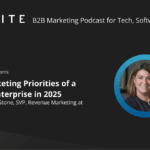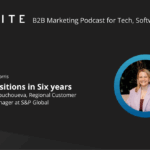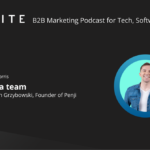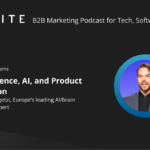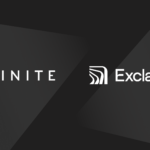What is a website actually for?
The answer to that question invariably differs depending on who you’re speaking to.
In consumer-facing companies, the answer to this has been, (and has been for a long time), that a website is for your customers. Whereas in the B2B industry, it wouldn’t be unfair to say that businesses can often end up building a new site for themselves, flood it with industry jargon, and in some cases not even have a defined value proposition.
What is clear, is that B2B has some way to catch up with it’s more consumer-focused cousins. As is correctly pointed out by McKinsey, the B2B experience is often significantly worse, and the gap in customer experience is only growing between the two.
B2B customer expectations are constantly growing and as people’s work lives and home lives merge together more and more, B2B customer expectations are rising at an extremely fast rate. It is the company’s responsibility to both manage and to exceed customer expectations.
Managing expectations keeps the brand, product or service experience as enjoyable as possible. That’s why every company needs to map a website user journey or WUJ. A website user journey is a series of hypothetical steps in a scenario where a user is interacting with whatever you are designing.
A WUJ should demonstrate two things. How users currently do things on your site, and how users could do things on your site.
Creating one will help the business solve a number of issues. It will:
- Show your business how customers interact with them in the first place
- Zone in on specific customer pain points at various stages of their buying cycle
- Show the divide between the desired and the received customer experience
- Increase value by focusing on what’s important and detecting holdups and inefficiencies
Defining a Website User Journey for B2B
A B2B customer journey is a lot more intricate than a B2C one. While a typical B2C customer journey includes five stages, Awareness, Research, Consideration, Purchasing and Use, a B2B customer journey can involve up to 12 significantly different stages.
These can be a number of, or every single one of these: Awareness, Research, Demo Request, Demo, Trial, Deliberation, Verdict, Audit, Negotiation, Delivery, Legal, Use, Support, Feedback.
This process is not fixed. Different industries will have different steps. For instance, the user journey for a B2B Technology product (think SaaS) may have more steps than some others. Some of these steps may not even occur, while others can repeat a couple of times. Others, like legal issues or a bad demo, can return the whole process a step back or all the way to the beginning.
Research for the B2B User Journey
Due to the often complex nature of the B2B website user journey, it becomes crucial to conduct a thorough research or discovery phase, beforehand. Again, this will differ significantly from a B2C customer journey and that includes what sources or type of information you will look to ‘discover’.
A B2B company needs to define what their new site will need to achieve, who the stakeholders and end customers are, and how best to connect with them in order to produce the best performing site.
You could go further and claim that this is a crucial part of defining any problem. This can be approached from two angles:
- Your business – Who you are, what you do, stakeholders, challenges, and goals. What do different departments do, how do they work together. What integrations do we need to perform at optimum?
- Your customers – Who they are, their needs, habits, thought processes, expectations, and frustrations. How are you visualising that customer journey?
The discovery process ensures that your project requirements are validated based on evidence rather than assumptions. It also allows you to look at the project from a balanced, unbiased perspective, and subsequently prioritise for what is needed the most.
Again, this is not a complete list and it will vary for different B2Bs, but we wanted to emphasise the significance of keeping an eye on anything that can (and most likely will) have an effect on your B2B customer journey.
How to Define Personas in B2B Website User Journey?
B2B customer personas are (have we mentioned?) much more complex than B2C ones.
Don’t worry, you don’t have to define a persona for every potential stakeholder. Instead, it can be much easier if you group them into three categories:
Finders – those who discover your product in the first place and then go on to spread the gospel about it throughout their company
Decision makers – those who make the decision whether to use the product in their company or not
End users – people who will actually end up using your service/product.
An even simpler approach is to create a persona for an entire business, instead of for individual stakeholders or groups. However, you have to be especially careful with this kind of approach as it may be overly simplified for larger and more intricate organisations. But, for small businesses, it can work very well.
Conclusion
So you’ve researched your current customers, ideal customers, and just as importantly, the needs and goals of your business. What now?
Once you’ve worked on the first lot of website user journeys, you might decide to delve further into the data and create more website user journeys for smaller segments of your customers or find where there are inefficiencies with your current journeys.
Either way, as a business you should be constantly iterating. The B2B customer journey doesn’t end with a couple of defined personas and a mapped website user journey. This is a continual process and involves a great deal of research, testing, trial and error. This is a process that should constantly be refined and reevaluated as your business, and your customers are not static – change is constant on both sides.
Check out the 93x Guide to Website Design for B2B Technology Companies for more info.

